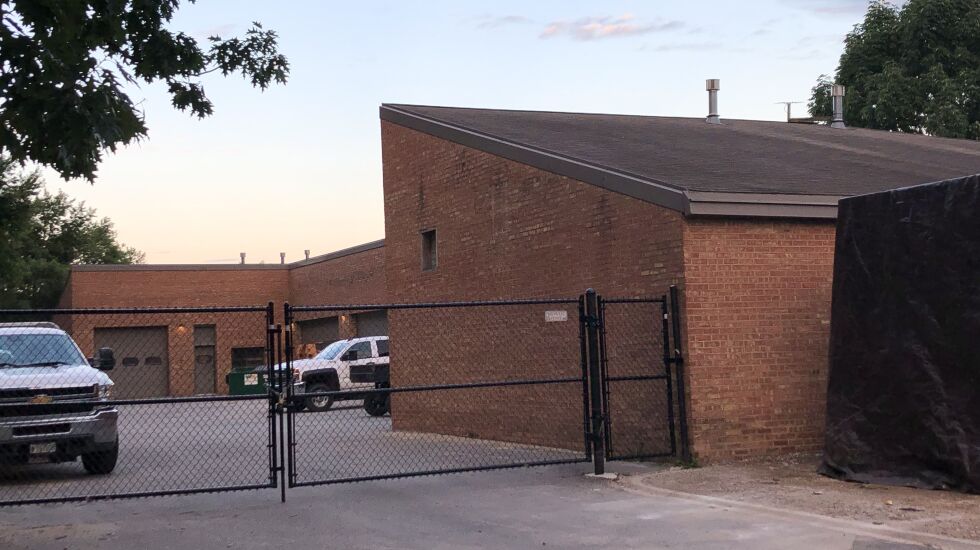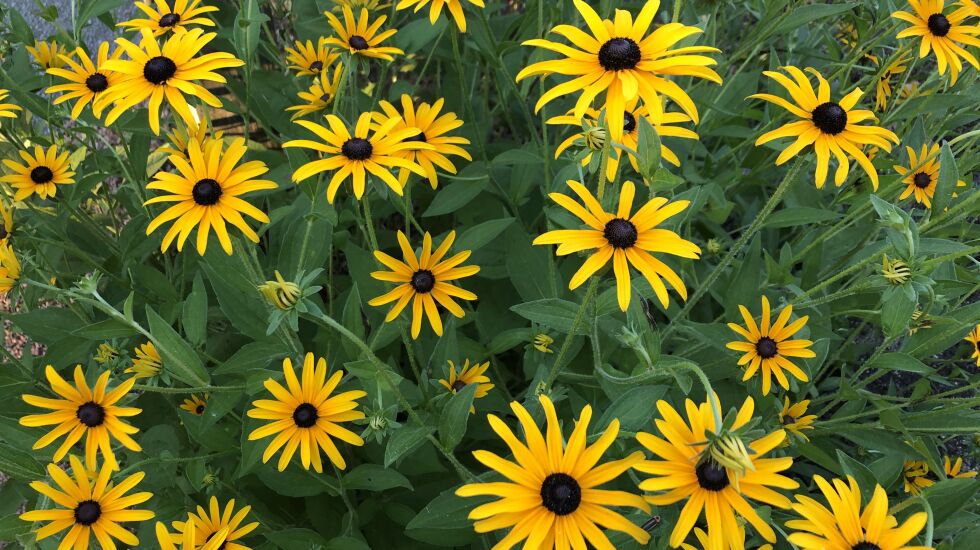
Humanity’s first home was a garden. And while biblical Eden is no longer available to stroll through, alas, the Chicago Botanic Garden is very much with us.
I’ve visited hundreds of times — the place kept my wife and I sane during COVID. While encouraging people to visit isn’t in our selfish interest — crowds — going at least once certainly is in yours.
Particularly now. This summer the garden is celebrating its 50th anniversary, showing off 10 large commissioned outdoor artworks, and the second half of August might be an ideal time to explore a place I often describe as “heaven-like.” (“Edenic” just doesn’t quite roll off the tongue.)
Half the size of New York’s Central Park — 385 acres — the Chicago Botanic Garden isn’t actually in Chicago, but Glencoe, immediately east of the Edens Expressway between Lake Cook and Dundee Roads.
Visitors are led through the wide range of natural habitats, from formal English walled garden to wildflower-bedecked prairie, from a carefully-cultivated Japanese island garden, complete with teahouse, to a woodland walk under towering oaks where only the blazed trail lets you know you’re not in virgin forest.

There are vegetable gardens and groves of birches, water lilies and desert cacti. I’ve seen deer, otters and, on one memorable occasion, a hooded merganser duck. One of the joys is shifting in scale and perspective, lifting your gaze from close-up examination of a gorgeous lily to peer across the lagoon at a bridge in the distance, flanked by weeping willows.
The place is so big, we recently spent an hour there walking and never went inside, merely circled the perimeter.
One of the more astounding aspects of the Botanic Garden is, no matter how often times we visit, and we often go three times a week, it’s always fresh, new, interesting, because of the changing light at different times of day, the seasons of the year, plants waxing and waning, annual shows — orchids, jack-o-lanterns, a light show at Christmas. My wife and I visit in February when it’s 20 degrees, as the garden is beautiful in snow.
Though summer is best. As impressive as the plants are — thousands of varieties of flowers, shrubs, trees, ferns — another big part of the garden experience is the range of people alongside you: all ages, races, languages, ethnicities, strolling together in harmony, enhancing the Edenic effect.
Hasidic couples on first dates, conversing gravely on benches. Multi-generational Muslim families; elderly Asian men, hands clasped behind their backs. Snatches of conversation in Spanish and Polish and Urdu. Visitors are often marking milestones, so are dressed up for weddings, quinceañeras, proms, church or, my favorite, simply having a friend snap a picture, capturing that classic immigrant moment: the I’m-doing-fine-here-mom photo to send back home to Bulgaria or Pakistan or Chad.

I stopped in last week to stroll with the president and CEO, Jean Franczyk. The place was unusually crowded for a Tuesday. What is this, free day? I wondered, my old joke, and indeed it was.
Admission isn’t cheap — around $60 for a family of four — but buying a membership is a bargain; go three times, and you’re in the black. There are at least two free days a month (the next is mid-September). Active duty military and teachers are admitted without charge.
Franczyk began by pointing out the first anniversary art pieces to greet visitors, literally over their heads: “Hebrarium,” a “painting in the air” by UK artist Rebecca Louise Law, created from 10,000 flowers collected at the garden over a year and carefully dried, then hung on copper wire from the ceiling at the Visitor Center entrance.
“This is the first piece installations she’s ever done where all the materials are collected from the site,” Franczyk said. “It changes with the light, it moves with people. It’s a really beautiful piece.”
I won’t critique all 10 artworks — it’s natural to like some more than others — except to note you must get deep enough into the garden to lay eyes on Patrick Dougherty’s “The Rookery,” which I’ve dubbed the Wicker Castle. Very whimsical.
You would think that an institution based on gardening and the beauty of botany might not fare well in the tumult of the 21st century. But 50 years on, the Botanic Garden is stronger than ever, with a staff of 667, including two dozen scientists, 59,000 members and over 1 million visitors a year.
The Shida Evaluation Garden, opened last Thanksgiving, is an enchanting expanse of bleached wood peristyles and crabapple canopied tunnels. They’re currently refurbishing the entrance and adding a picnic glade to replace the tables heretofore exiled to the parking lot.
Progress has been slowed by the problems facing everyone else. “Supply chain has been an issue — issues with paint. Issues with steel ... issues with cement,” laughed Franczyk. The electric trams on order are in a container somewhere across the globe.
None of which affects the glorious abundance on display everywhere.
“Nature’s in demand,” Franczyk said. “People are hungry for outdoor space. They get respite and relief from it. I like to say that you come to a place like the garden, we draw you in with beauty, we develop a love for what you see. That becomes care and concern, on your part, and you’re motivated then to protect plants and protect the planet all while making yourself feel better because you’ve spent time outside. So good for people, good for planet.”
I don’t have room for much history, but the reason for creating the garden was simple: Chicago didn’t have one.
“Of all the major cities in the country,” said Chicago Horticulture Society president W.A.P. Pullman, the driving force in creating the garden. “Chicago is without a great horticultural institution dedicated to promoting gardening as a way of life.”
So Pullman — grand-nephew of George Pullman, the rail car king, great-grandson of Allan Pinkerton, founder of the detective agency, and obviously a man who knew how to get things done — set out to build one, convincing the Cook County Forest Preserve to sign a 40-year lease on 300 acres of “Glencoe swamp,” part of the Skokie Lagoons, polluted with waste water from the Clavey Road sewage treatment plant.
First he had to raise $1 million, to show he was in earnest, so he hit up corporations and sold jars of homemade parsley jam.
“We must think 50 years ahead,” Pullman said.

Landscaping began in 1966 — beloved Chicago architect Harry Weese had a role in early design, and an otherwise nondescript maintenance facility at the far south end bears his trademark triangular flourish. Planting began in spring of 1967. By the end of 1972, there were 20,000 plants and trees, a model vegetable garden, 60 acres of lagoons and a nature trail for the blind.
The Botanic Garden is still especially welcoming to people with disabilities, who were out in numbers Tuesday, with an Enabling Garden offering wheelchair height planters, and special arrays of plants intended to be smelled or touched.
“We think this will be magnificent,” Pullman presciently told the Cook County Board on Jan. 27, 1965, when they signed over the land. “We have every intention of making it so.”
Mission accomplished.








